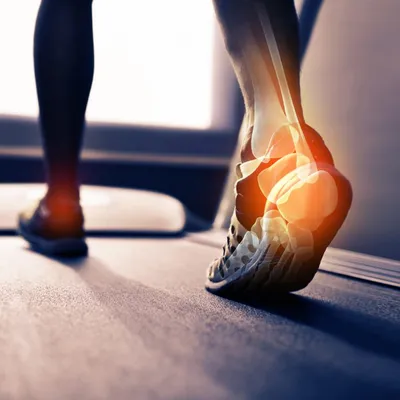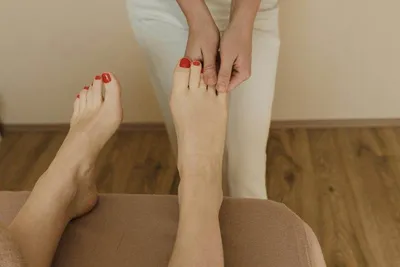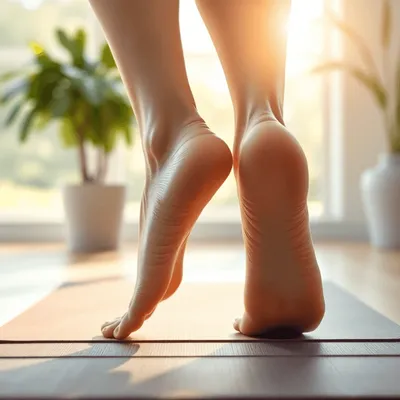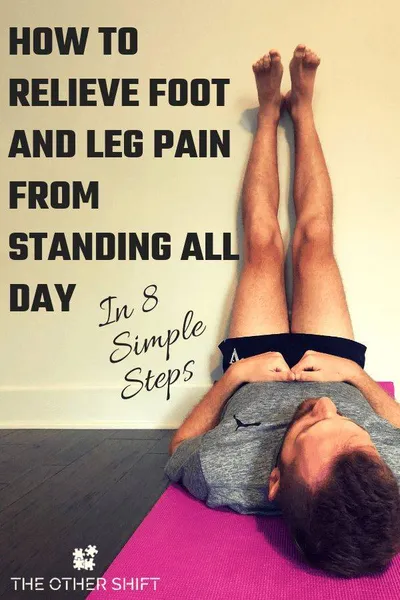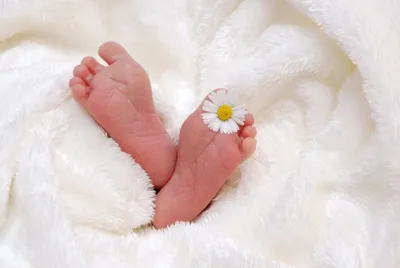Foot Problems – Runner’s Knee
Patellofemoral Pain SyndromeDescription: One of the most common causes of knee pain in a runner is due to “Runner’s Knee” or Patellofemoral Pain Syndrome. The symptoms of this condition may include:
1. pain near the knee cap (patella), and below it. The pain is located on the anterior surface (front) of the knee, not deep within the knee joint.
2. you may feel and hear a “grinding” when the knee is flexed and extended.
3. pain after sitting with the knees bent for a time, and then standing up and walking.
4. walking or running downhill, or walking down stairs may produce knee pain.
5. direct pressure on the knee cap may produce pain.
6. the area around the patella may swell when pain is present.
What is Runner’s Knee (Patellofemoral Pain Syndrome)? The patella (knee cap) lies in a groove on the front of the femur, just above the knee joint. This groove is called the Trochlear Groove. Normally, when walking or running the patella moves up and down this groove vertically, with no sideways motion (just like an elevator moves). Pain occurs when the patella is not tracking vertically in this groove, but is pulled sideways. This will cause the cartilage on the undersurface of the patella, and the cartilage in the Trochlear Groove to rub abnormally against each other, producing pain. If left untreated, the cartilage that is subjected to this excessive rubbing will become permanently damaged, and begin to deteriorate and break down. This condition is known as chondromalacia and can become permanent, since damaged cartilage cannot usually repair itself.
Causes of Runner’s Knee: In order for the lower extremity to function properly and painfree, the feet, ankles, legs, and knees must be in a straight or neutral alignment. This allows the patella to move normally within the Trochlear Groove. The most common cause of misalignment begins in the feet and is due to a biomechanical defect known as pronation. Pronation is present when the feet roll in at the ankle. With each step, pronation causes the heel to strike the ground on the inner side of the heel, rather than the center of the heel. So as the foot rolls in, the lower leg must also roll in, causing the knee and patella to roll inwards, or medially. When this occurs, the patella cannot track vertically in the trochlear groove, but is forced to track vertically and medially, thereby producing friction pain.
Other, less common causes of this condition include: knock knees, weak thigh muscles, and an abnormal “Q Angle” (the angle that measures the pull of the Quadriceps muscle on the patella).
Short-Term Pain Relievers: These steps will help to provide you with short-term pain relief.
1. Rest. Avoid weight-bearing activities, and keep the foot elevated as much as possible.
2. Avoid any activity that requires frequent bending of the knee.
3. Apply ice to the lower femur, patella, and upper shin areas for 15 minutes every 2 hours. This will help to reduce inflammation. If the ice becomes uncomfortable, discontinue its use immediately.
4. Massage the area.
5. Avoid walking down stairs and inclined surfaces.
6. When the pain subsides, you may gradually return to activities; however, the pain may not subside completely, or it may return quickly if the pronation present in the feet is not treated.
Long-Term Pain Relievers: The following remedy will help provide you with long-term pain relief.
In order to obtain long-term relief from Patellofemoral Pain Syndrome, you must control the biomechanical abnormality (such as pronation) in the feet which causes the patella and trochlear groove to rub abnormally against each other with excessive force. Unless this problem is quickly and properly overcome, the pain may not completely subside, or if it does, it will usually return when normal running begins again. To treat this abnormality, you must stabilize the feet and provide proper shock absorption in the feet, so that abnormal forces are absorbed in the feet, and not passed on to the knee. In my 30 years of private practice experience, I have found that the best way to effectively treat these problems, and help to eliminate Patellofemoral Pain Syndrome, is with the use of custom-made sports orthotics designed for this condition.
Custom-Made Sports Orthotics for Runner’s Knee (Patellofemoral Pain Syndrome): The advanced technology we employ enables our sports orthotics to gently hold the feet in their neutral or normal position, thus overcoming the biomechanical defects of the feet and legs (such as pronation) that lead to Patellofemoral Pain Syndrome. This allows the feet to function as the efficient and stable foundation that our body needs; thus the patella, the knee, hip, and back are not subjected to abnormal stresses, and they function in their proper alignment. This reduces fatigue and pain throughout the entire body, not only the knee.
Our orthotics will also provide semi-flexible support to the arch by “giving” to absorb the shock of each step, rather than our foot and knee (the orthotic acts in the same way that a shock absorber does on an automobile). When our weight is removed from the orthotic, the arch returns to its original height since the material we use has a built-in “memory.”
Finally, by providing increased padding and support for the balls of the feet using materials that mimic the action of our own fatty pads, our sports orthotics will not only provide comfort, but will also help to prevent stress fractures, joint pain, and callus pain.


